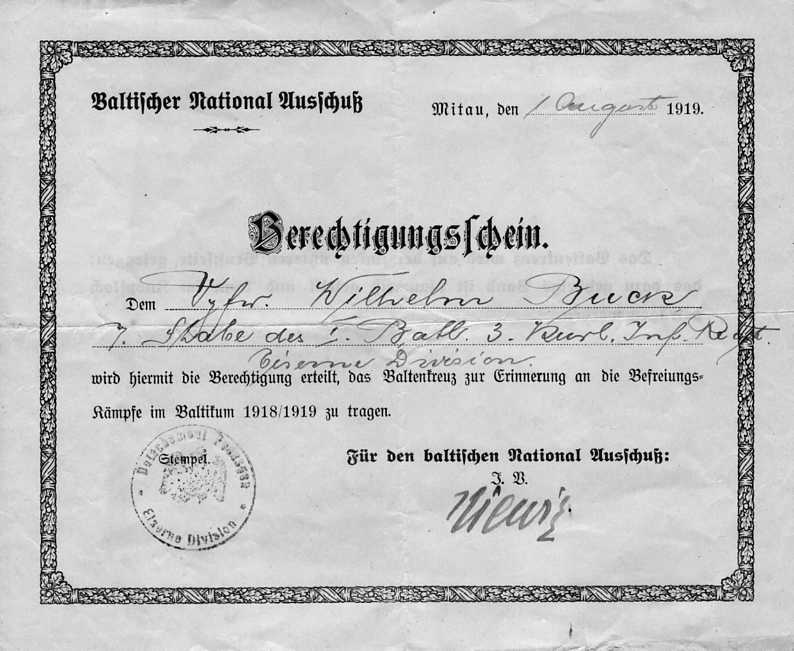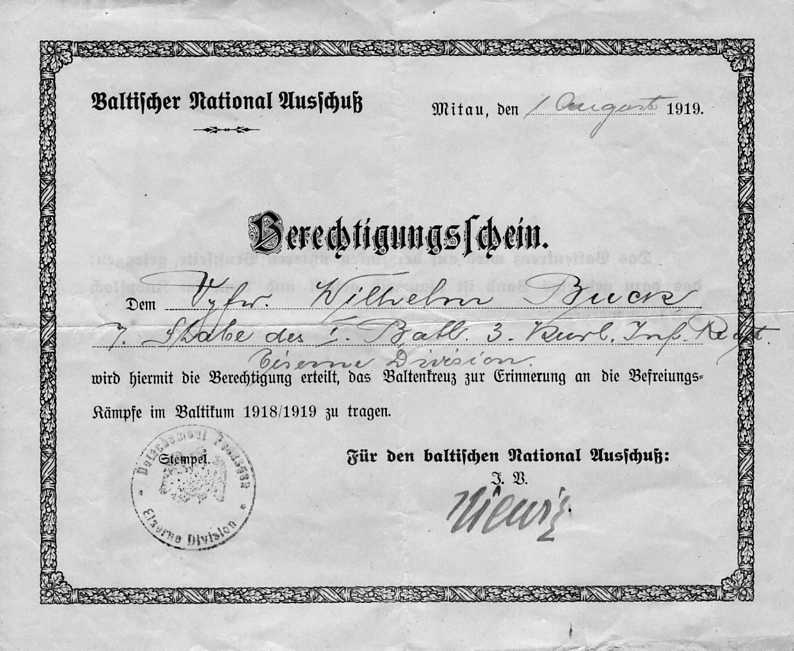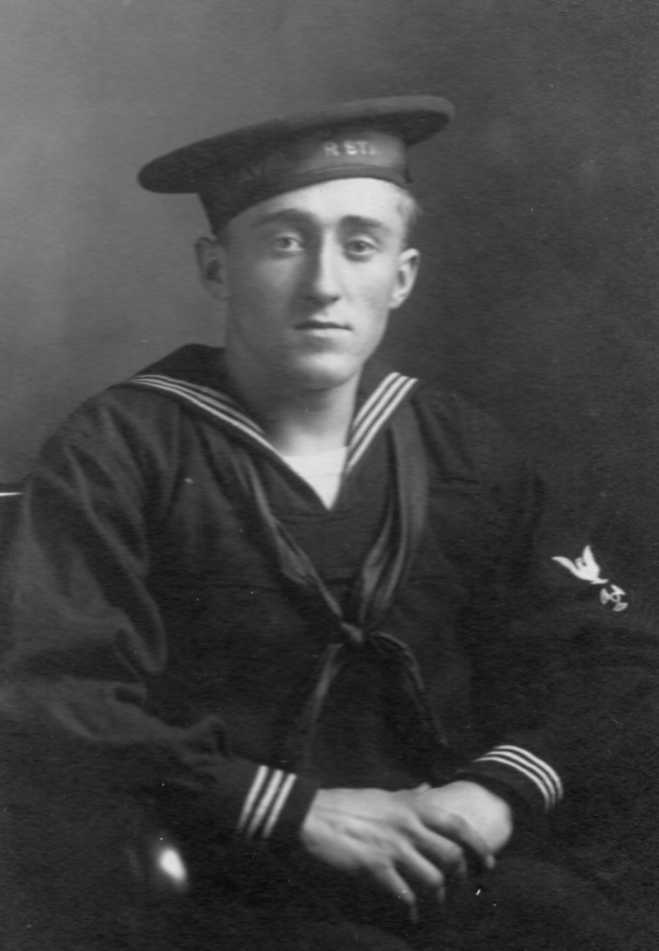-
Posts
2,143 -
Joined
-
Last visited
-
Days Won
10
Content Type
Profiles
Forums
Blogs
Gallery
Events
Store
Posts posted by Odulf
-
-
Recently I picked up this iron SS buckle, painted greyis green and rusty. It is stamped RODO under the catch. What worries me is the position of the catch. It is so far to the rim that the rim of the buckle just touches the leather of the belt.
What is the opinion of the knowledgeble gentlemen?
Pic. #1
 0
0 -
Horst von Schroeter (10-06-1919 - 25-07-2006),
RK am 01-06-44 als Oblt.z.S.
Kdt. U123; Kdt. U2506
Konteradmiral und Stellvertretender Inspekteur der Bundesmarine

Friedrich Kemnade (12-12-1911 - 29-01-2008),
RK am 23-04-42, als Kptlt; EL am 37-03-43 als Kkpt.
Chef 3. S-Flott.
Konteradmiral und Befehlshaber im Wehrbezirk I-Kiel
 0
0 -
In my photo collection I have many photos of Pioniere, all wearing black cord around the cap (as usual). But I have one photo which stands out of the ordinary. Shown below are 2 studio photos of pioneers, left - 54th (Gebirgs) Pionier-Bataillon; right (for comparison) 49th (Panzer) Pionier-Bataillon. The Pionier of the 54th wears an Infantry cap, the Pionier of te 49th wears the standard Pionier cap.
The 54th was erected on 08-10-1936 to become the Pionier component of the Gebirgs Brigade, later the 1st Gebirgs Division.
Does any one have a clue why he should wear an Infantry cap?


 0
0 -
I will defer to Graham and Mike on questions of uniform - however, I have to agree with Rick and say that I am not convinced it is RA. I agree with post war with the tie - but the badge ?
Battle Dress is 1949 pattern (open collar, pleated pockets, buttons visible).
0 -
Army Glider Pilot wing (Army Air Corps)
0 -
Died c. October 1883 at Cairo from cholera. "recently appointed acting military chaplain" From the Franciscan Annals:
http://books.google....=Duggan&f=false
Fuller obituary here: http://books.google....ggan%22&f=false
Query how long would it take the medals to get out to Cairo?
Thanks Michael!
If Farher Duggan died in about October 1883, his Eqypt Medal must have been the (dated) 1882 issue.
This medal was instituted in October 1882, and, obviously, the British Government lost no time in the production, naming and shipping of the medals to the Forces in Egypt; and neither did the Khedive.
0 -
Further to my earlier post, I have had a look again at the Egypt Medal Roll WO 100/61, and have now found a possible identified candidate for your Franciscan
The page immediately preceding the one that contains the details of the five Franciscan Nuns, has two names entered (one of which has subsequently been scored out) as being entitled to the Egypt Medal 1882 with no clasp. The names are shown as;
- Reverand Father Emmanuel Rennery (Sic) O.S.F.
- Reverand Father Patrick Duggan O.S.F.
The first name is scored out, and the surname could as likely be Remmery or such like - he appears not to have been issued a medal as only the second name which is un-marked has a note stating medal issued 3 October 1883 - the same medal isue date as the five nuns!
Presumbaly O.S.F. is an abbreviation for the Order of Saint Francis ?
As information.
Yours aye,
Mark
Thanks a lot Mark for your effords, very very interesting and much obliged!
OSF is translated as Order of St. Francis, or as Order of Servant Franciscans.
It is interesting to note that the photo was taken in Alexandria.
The name may indicate Irish origine, a breeding ground for Catholics for centuries.
Now, what was his "business" there?
The photo showed up in Holland, in an internet auction.
0 -
RAD was my favorite Topic when I was collecting WWII German Militaria; I would like to say these are some very nice photos.
http://www.feldgrau.com/rad.html
Thank you for sharing
Lorenzo
I am mainly collecting photos, documents, and documentation and I keep a vast number of RAD photos and postcards in my collection. Always willing to cooperate in the production of books an documentations (such as by Bender, where many of my photos are published) to illustrate the (uniform) history of the Third Reich.
0 -
Some more pics with sleevebands from my photo collection:
H - Gruppe 274. Gau XXVII, Baden

S - Gruppe 105, Abt. 7. Gau X, Niederschlesien

T - Gruppe 75, Abt. 4. Gau VII, Schleswig-Holstein

S - Gruppe 226, Abt. 7. Gau XXII, Hessen-Nord

S - Gruppe unknown - sleeveband on the wrong cuff.
 0
0 -
Hello there,
Great thread with some interesting photos.
William Kramer
Lovely crisp photo. Any idea about the identity of the Admiral?
Is this the same guy?
 0
0 -
The Saarland Plebiscite Medal shows soldiers of the Netherlands, Sweden, England and Italy, who oversaw the plebiscite and return of the Saar to Germany; the reverse depicts a hand dropping a ballot into a box and "Volksabstimmung Saargebiet/13 Jan 1935". The black/white/blue ribbon reflects the colors of the Saar flag. In January 1935, over 90% of the voters in the Saar Plebiscite elected to return to German control, having been under Allied and neutral control since 1918. These seem to appear mostly in the UK, because the British provided a large of the troops involved (and they couldn't wear it).
Yes, the international force was commanded by the British Major-General Brind and it consisted of 1500 British, 1300 Italian, 250 Dutch and 250 Swedish troops. The Dutch contingent numbered 234 marines and 16 men of the Corps of Transport with their lorries for transportation. No official decoratios or commemorative medals were issued to these Dutchmen.
0 -
Some time ago I added this strange medal to my collection.

Description:
diameter: 30 mm
ribbon: silk, 23 mm, with equal stripes black-white-blue with white borders (1 mm)
material: bronze(d)
text obverse: ITALIA / SVERIGE / ENGLAND / NEDERLAND
picture obverse: four busts of soldiers of the four counties
text reverse: VOLKSABSTIMMUNG SAARGEBIET / 13. JAN. / 1935
picture reverse: a rising sun behind a hand putting a ballot sheet into a ballot box
maker: unknown
issued by: unknown
Does any of you gents have an idea of the story behind this unofficial commemorative medal?

 0
0 -
The bow on the California Naval Militia cap was added by me (in the wrong place).
Thank you for clearing that.
0 -
Thanx Johnnymac.
If my eye doesn't trick me, I see that the bow of the California Naval Militia is behind the head, why would that be?
0 -
Perhaps not the most crisp, but defenitely a very interesting photo of the Silesial Eagle in wear.

 0
0 -
Baltenkreuz
Size: A5
to a Vize-Feldwebel of the I. Bataillon. 3. Kurlandische Inf-Rgt., of the Iron Division
Signature: Hauptmann Kiewitz
 0
0 -
Size: 38 x 29 cm
Issued to: Lieutenent Walther Pientka from Duisburg,
who served in the Freikorps: Freiwilliges-Landes-Jäger-Korps.
Signature: Wilhelm Reinhard, Bundesführer of the Deutsche Reichskriegerbund / Kyffhäuserbund, and organiser of the Freikorps Reinhard.
 0
0 -
The appropriate certificate, this one issued to a Vize-Feldwebel of the I. Bataillon. 3. Kurlandische Inf-Rgt., of the Iron Division
 0
0 -
Love this topic

In my collection I have this studio portrait (The Page Studio, East Boston, Mass.), dated December 1917, of a Machinist Mate wearing the cap tally NAVAL AIR STATION.
Were the cap tallies always closed with a bow tie over the left ear?
 0
0 -
Perhaps this most interesting question can be answered by looking at early German portraits, and asking the question: When did the custom of wearing ribbons instead of full medals became customary?
Going through my photo collection I have noticed that the earliest photos show only (high ranking) officers wearing Orders in their button holes. During and shortly after the Franco-German War of 1870-71 it looks like the first ribbons without medals are worn on the chest. Thus no medal ribbons in button holes, only full size decorations without the matching ribbons. Still, during the Franco-German War the EK2 is worn from the button hole (permanently on the kleinen Dienstanzug?). During the Great War I see the first ribbons without medals appear in button holes, also in combination ribbons, combining more ribbons into one.
Amongst the first ribbons to be permanently worn in the button hole is the Rettungsmedaille am Bande.
Some photos from my collection below.

Portrait of: August Wittenstein, Inf.Rgt. Nr.55 (dated Juli 1871)

Undated, photographer Vinmer, St.Quentin (Aisne) in France

Fritz von Bock und Polach (undated), photographer Ch.Boquet, Bar le Duc

Unidentified Lieutenant of the Reserve with ribbon bar

Beautifull incoloured photo, dated 19.1.1892 (???)
0 -
I don't see the relation between orders and medals here.
Still, these are nice pics of orders.
0 -
Most kind, thank you very much!
0 -
Thanx chums! Your adds exclude some, but also attribute another mistery, perhaps to be unveiled by others.
I so much love these photos of badges being worn on uniforms...
Together we gain, that's the force of this forum.
0 -
A town name is needed.
Remember there are 12,500+ tinnies and then there are goodness knows how many WHW badges.
Regards,
Pete
Hi Pete,
The photographer's studio was in Lippehne (Brandenburg). Would this be of significance?
Thanks for your help.
0




RODO SS buckle
in Germany: Third Reich: Uniforms, Headwear, Insignia & Equipment
Posted
Pic. #2